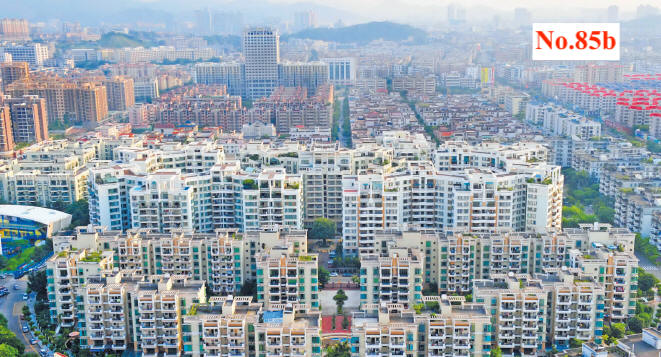
Shekki – Shiqi – 石歧 aka Zhongshan City – 中山市; regardless of how you express it has long been a place of significance for Chinese Australian history. Despite this, the passage of time and generations inevitably means memories of the importance of such a place fades. This inevitable fading can be seen in the fate of this framed photo of the rich and vibrant Pearl River Delta city of Shekki of the 1930s. This photograph was a popular one and many Chinese Australians who visited this capital of their home county of Zhongshan acquired one to hang prominently in the family home back in Australia.
The one pictured here was held by a family living in or near Kirk Street Ultimo, Sydney before it found itself unceremoniously atop a garbage truck sometime in the late 1970s. Fortunately Kirk Street residents Lee Sing and Chung “Jack” Mar recognised its significance and retrieved it. Thereafter this image of Shekki at the height of its prosperity as one of the major centres of the Chinese diaspora and their remittances just before the crisis of the Japanese invasion lay in storage – safe but neglected.
It was up to a subsequent generation – Jack’s son Allan Mar – to finally decided to seek a permanent home for this now rare memento of times past. Allan sought the advice of Australian Chinese Community Association who pointed him to the Chinese Australian Historical Society. The CAHS has taken possession until such time as a Sydney based museum arises that can display this object in its full historical context.
And what is that full historical context?[1] Impossible to provide here in full, though many of the objects in this series touch upon it. (See No.14 & No.39) What can be said in brief is that Shekki was a city connecting nearby villagers with both Guangzhou (Canton) and Hong Kong. Villagers from the Xiangshan/Zhongshan district known as Long Du (隆都) in particular were early traders and residents of the newly occupied by the British island of Hong Kong. From here they connected with the Californian and Australian goldrushes and subsequently kept up links with these places as well as Hawaii to work and earn money for their village-based families as merchants, carpenters, market gardeners, laundrymen and much more. Shekki became enriched as the place of gold shops where remittances in various currencies were exchanged for Mexican dollars, the homes of wealthy returnees were built, and the goods of the world could be bought. Famous stores such as Wing On had branches in Sydney, Hong Kong, Shanghai and Shekki, and some streets of the later were known for being occupied with returnees from Australia.[2]
All this wealth and cosmopolitanism came crashing down with the Japanese invasion which cut off the remittances from overseas. The subsequent revolution in China and the new governments policies limited contact with the diaspora and led to many joining them rather than remain in the villages or Shekki. However, once the opening up of China began the old Shekki, now transformed into Zhongshan City, was well placed to revive its old connections and to grow once more into a vibrant modern city.[3]

Today many people still come from Shekki/Zhongshan City to Australia but most no longer remember the long history of connections represented by this image. History it seems continuously needs to be recovered from atop garbage trucks if we are to remember where we come from and perhaps even know where we are going. Take care before you throw anything away!
- Thanks for Allan Mar for his preservation and donation.
[1] For a full historical account of the role of Shekki with the links of the Long Du peoples of Zhongshan and with Sydney, San Francisco and Hawaii see Michael Williams, Returning home with glory: Chinese villagers around the Pacific, 1849 to 1949 (榮歸故里:太平洋地區的中國僑鄉 1849–1949), Hong Kong University Press, Hong Kong, 2018.
[2] For oral histories describing visits by Australians to Shekki see Mavis Gock Yen, South Flows the Pearl, (Eds) Siaoman Yen and Richard Horsburgh, Sydney University Press, 2022.
[3] For more on this transformation see Heritage and History in the China-Australia Migration Corridor, Hong Kong University Press (forthcoming).

